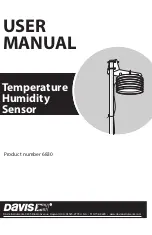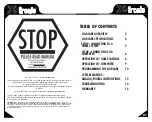
EB 2640 EN
15
Cleaning and maintenance
6
Cleaning and maintenance
The pressure reducing valves do not require
any maintenance. Nevertheless, they are
subject to natural wear, particularly at the
seat, plug and operating diaphragm.
Depending on the operating conditions,
check the regulator at regular intervals to
avoid possible malfunctions.
WARNING!
Be aware of the risk on performing
work on pressurized or hot plant sec-
tions.
Hot process medium can escape un-
controlled on dismantling the regula-
tor. Risk of scalding!
Allow the regulator to cool down be
-
fore depressurizing and draining it
and remove it from the pipeline.
Check the seat and plug for wear. Check that
the PTFE layer of the diaphragm (see Fig. 1,
Fig. 12, and Fig. 13) is not damaged (e.g.
cracks, milky coloring at the bends). This is
necessary for compliance with EU
1935/2004.
If leakage still occurs and there is no visible
signs of damage on the diaphragm, check
the connection between the plug support and
plug stem or the clamped connection be-
tween the valve body and bonnet (see sec
-
Tighten the connection to achieve a leak-
proof joint.
6.1
Cleaning
To clean inside the regulator, the plug can be
kept in the open position in the version with
stem locking to allow the valve to be cleaned
(CIP = Cleaning In Place or SIP = Steriliza
-
tion In Place) while it is open (see Stem lock
ing for CIP or SIP on page 8).
Stem locking:
Pneumatic for Type 2371-
10/-11 · Manual for Type 2371-11
The disengaged stem locking does not affect
the regulator's control function.
















































